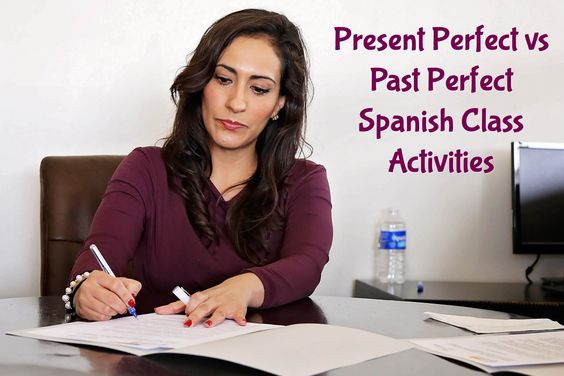
Both the present perfect and past perfect tenses are formed using the auxiliary verb “haber” (to have) and a past participle. Students may find it difficult to distinguish between the two tenses since they both involve the same auxiliary verb. In addition, the past participle often looks the same for regular and irregular verbs in the present perfect and past perfect tenses. Context and time markers can help to differentiate between the two tenses.
The present perfect (pretérito perfecto) is used to describe actions that have happened in the recent past that have a connection to the present. The past participle of the verb is used with the present tense of the verb “haber”. For example, “he comido” (I have eaten).
But the past perfect (pretérito pluscuamperfecto) is used to describe actions that happened before another event in the past. The past participle of the verb is used with the imperfect tense of the verb “haber”. For example, “había comido” (I had eaten).
Below is a Spanish lesson plan for intermediate-advanced students and a resource sheet with additional materials to complement your lesson.
 Present Perfect and Past Perfect: Jobs Vocabulary Lesson Plan for Spanish 3 – Students identify and understand a variety of expressions that relate to jobs, professions, and occupations by reading a cover letter for job applications and job postings. They also understand when the present perfect is used to emphasize events, actions, or situations that hold some sort of importance to the present time.
Present Perfect and Past Perfect: Jobs Vocabulary Lesson Plan for Spanish 3 – Students identify and understand a variety of expressions that relate to jobs, professions, and occupations by reading a cover letter for job applications and job postings. They also understand when the present perfect is used to emphasize events, actions, or situations that hold some sort of importance to the present time.
